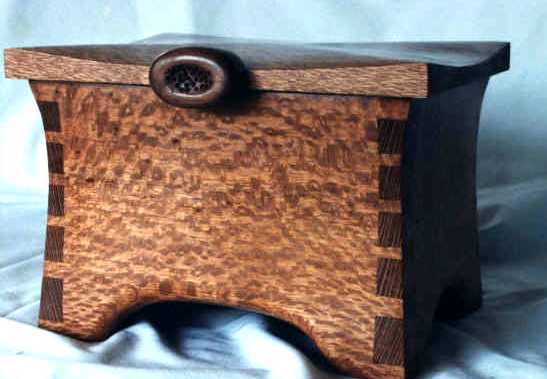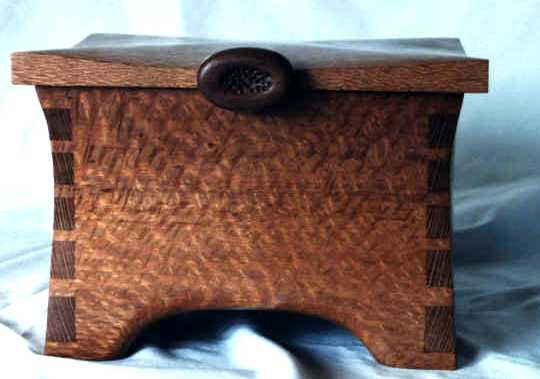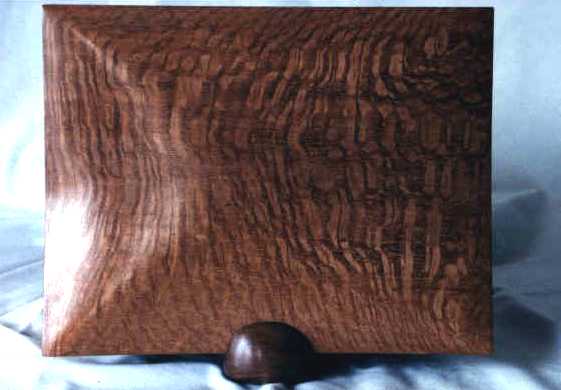
Quartersawn Lacewood is one of the most beautiful woods I've ever come across. So when a friend tipped me off that a local hardwood supplier (Monteath Moulding in Old Bridge, NJ) had recently gotten a good supply in I hustled on over and bought a pile of it. I like it when the medullary ray flecks are prominently displayed and I like it even more when they appear as stripes rather than spots. This batch was really exceptional.
Since I make my boxes from single wide boards, rather than glued up narrower boards, it can be difficult to find nicely figured woods in wider boards. This is especially true for quartersawn wood, since the the sawyer must start with a log that's been cut into quarters so the maximum width of a board is somewhat less than the radius of the trunk.
So I feel very lucky when I come across wood as beautiful as this in widths I can use.

The design of this box is very similar to a Leopardwood box I made several years ago. The dimensions are roughly 6" high x 11" long x 8" wide. The Lacewood is almost identical in color, figure and overall appearance to Leopardwood, but it's considerably less dense. While fairly soft, it's still difficult to work since the flecks/rays are softer than the surrounding wood. Handplanes tend to tear the wood up pretty badly, even my fined mouthed, super sharp smoothing planes.

With a sculpted box like this I use a combination of tools - drawknife, scrubplane, spokeshaves, rasps and files to shape the box carcass and top. This gets me very close to the final shape, but the surface is very rough. To smooth the surface I use an electric random orbital sander. It's one of my least favorite tools to use, but it does the job. One has to be very careful with it, though. It's very easy with the rougher grits of sandpaper to remove too much material.
I spend a great deal of time eyeballing the sides and corners, trying to make everything symmetric, but as with most handwork there will be small differences noticeable if you look long and closely enough.

The handle on the lid is carved from a chunk of walnut. These photos were taken under natural light on a cloudy day and the wood appears more brown colored than under sunlight or incandescent light. With the latter the wood has a pronounced orange tone.

I always try to use the nicest figured and widest boards for the box tops. This photo shows what I mean by stripes rather than spots. The figure in the top strikes me as very "reptilian" at times and under the French polished orange shellac finish it has a holographic 3-D quality that has to be seen in person to be appreciated.
Back to Harvest Woodworks Home Page?
This page hosted by Geocities Get Your FREE Homepage!